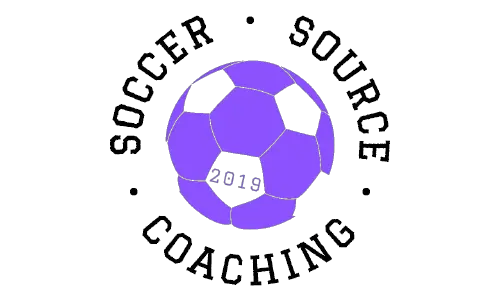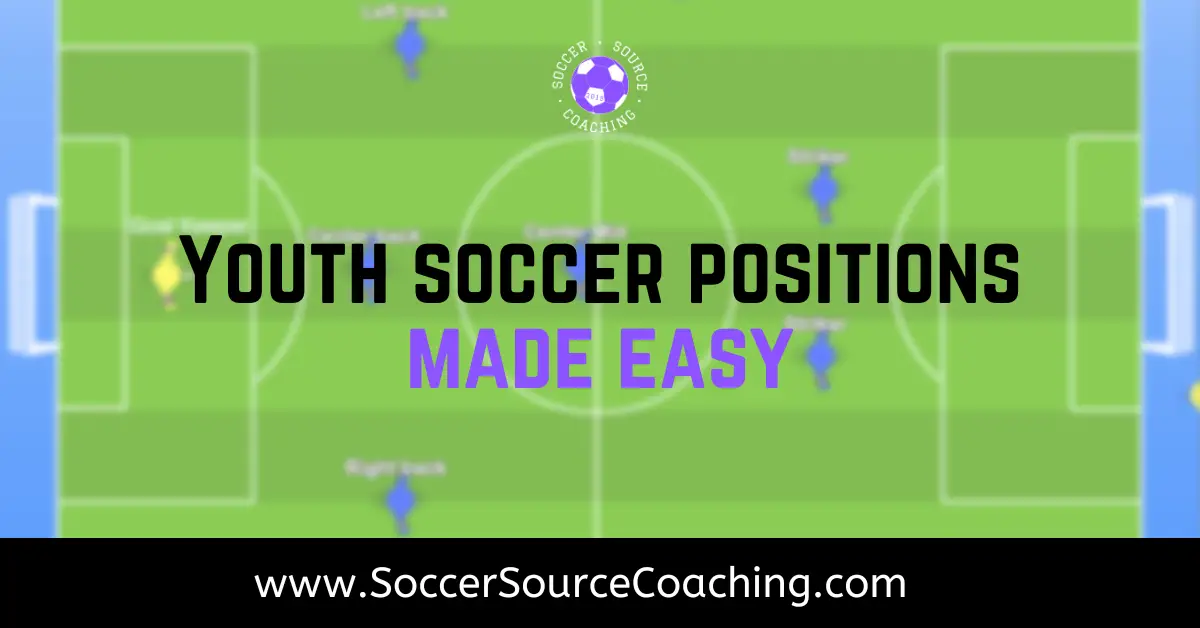As a new grassroots coach, it can be hard to understand the positions in youth soccer and their responsibilities. This post aims to be a one-stop guide that will quickly and simply help you explain youth soccer positions for 5v5, 7v7, 9v9, and 11v11.
If you are coaching youth soccer you may find these 12 youth soccer coaching tips helpful
The 6 positions in youth soccer with their roles, responsibilities, and where they play on the pitch
Goalkeeper
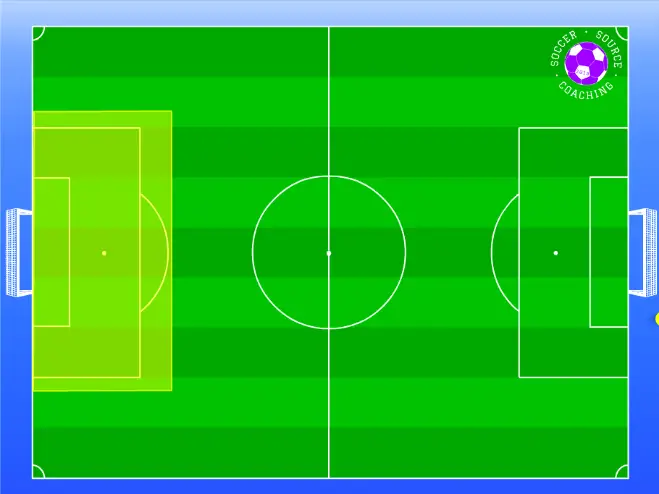
The goalkeeper is the only player on the team that can pick the ball up with their hands, however, they can only do so in their specified penalty area
They are the last line of defense when trying to prevent the opposing team from scoring, using their hands and other parts of their body to stop the ball from crossing the line and into the goal.
The goalkeeper is also the only player who can see the entire pitch, so they must communicate with their teammates in front of them to help keep them organized and focused.
Click here for a complete guide on how to be a better goalkeeper in soccer
Fullback
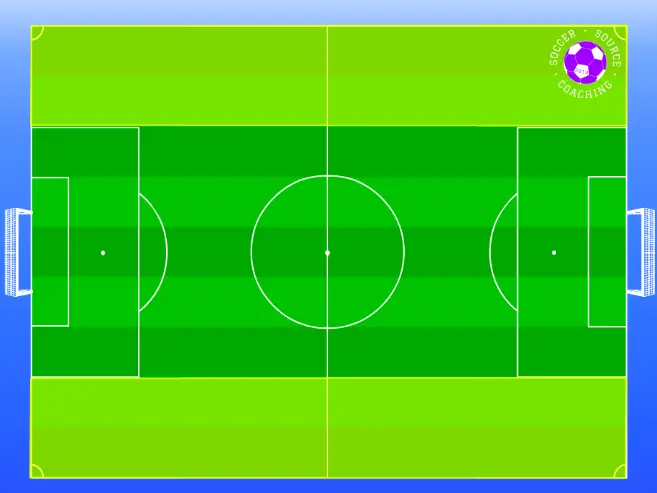
Full backs are more common in 9v9 and 11v11 soccer formations and play on the outside of the center backs, one on the left and one on the right side.
Defensively they are responsible for marking the wingers and preventing crossing from coming into the box.
Typically these players are faster than the center backs and will help cover them If a ball has been played over their heads and the center back cannot make it.
The fullbacks are also expected to support the attacks when in possession of the ball.
They will do this by getting as wide as possible to receive the ball and create overloads in wide areas by making overlapping runs with the winger.
Click here for the complete guide on how to be a better fullback in soccer
Center back
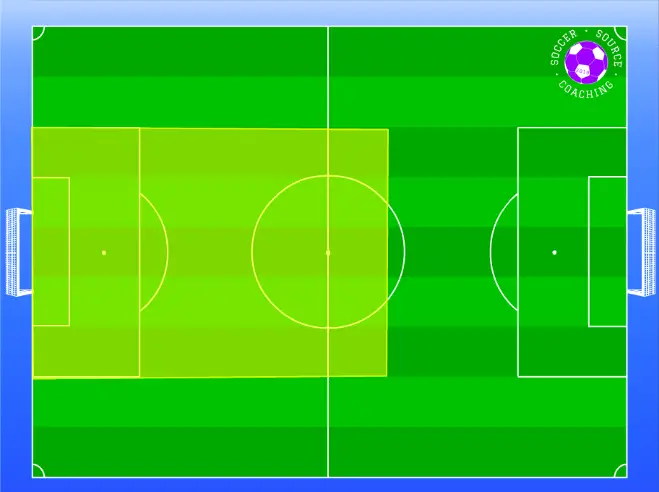
Centerbacks are at the heart of every soccer team’s defense and play a crucial role in preventing the opposition from scoring goals.
They need to be excellent at reading the game and anticipating what the opposition strikers are going to do.
Centerbacks need to be confident in winning ariel duels and challenges as well as being comfortable with the ball at their feet.
This is especially important in today’s game where teams are being encouraged to keep the ball on the floor and play out from the back.
Click here for the complete guide on how to be a better center-back in soccer
Wingers / Wide players/ Left and right midfielder
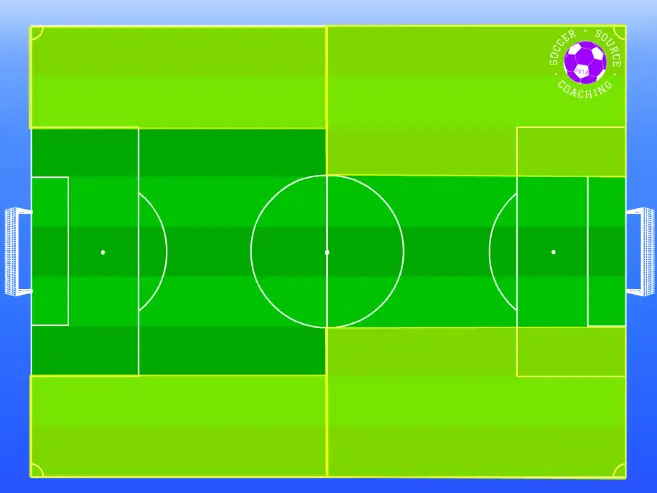
The wingers are an attacking outlet for your team and they should provide your teams with plenty of assists and goals!
The team will play with 2 wingers, one on the left and one on the right side.
When attacking, they will look to receive the ball in wide areas and run at the opposition fullback.
They will either choose to cut inside and drive toward the goal or look to go around the outside and provide dangerous crosses for their teammates to attack.
Defensively, the wide players need to drop back and offer support to their respective fullbacks.
If a winger refuses to track back, this can leave the fullback in a vulnerable 2v1 scenario.
Click here for a complete guide on how to be a better winger in soccer
Center Midfielder
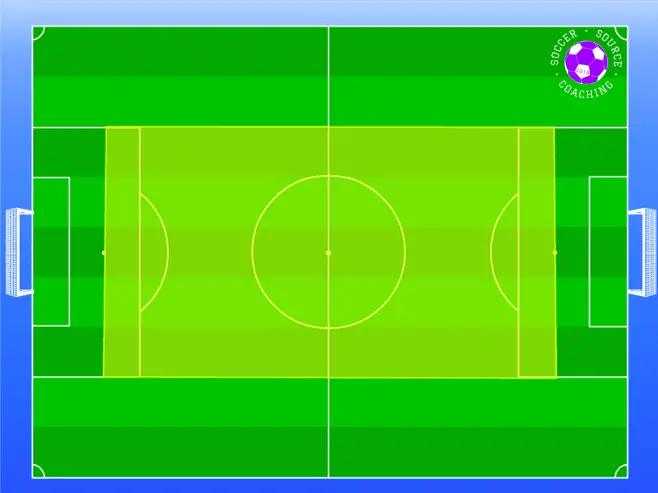
Center midfielders are usually your best players on the team and play in the middle of the midfield.
They are responsible for breaking down play before it even gets to the defenders.
Once they have won possession back they are then the players who will look to start attacks by playing through the opposition’s defensive lines.
As the game has evolved the center midfield position can be separated 3 variations:
- Traditional center midfielder
They are often described as box-to-box midfielders and look to balance their defensive and attacking responsibilities.
- Defensive midfielder
This type of midfielder will sit in front of the defensive line and act as a shield to break down play. While in possession of the ball, they will become a team’s pivot and looks to switch the point of attack.
Click here for a complete guide on how to be a better defensive midfielder in soccer
- Attacking midfielder
The attacking midfielder will look to find space between the opposition midfield and defensive lines. They will create goal-scoring chances for themselves or their teammates with their creative passing or dribbling skills.
Click here for a complete guide on how to be a better attacking midfielder in soccer
Striker
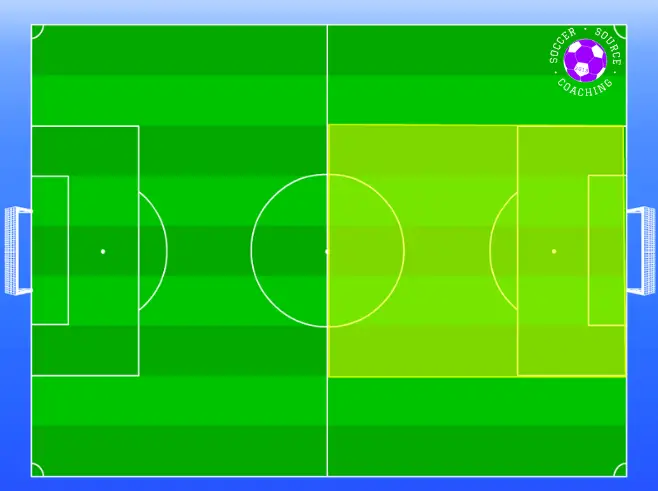
The striker is the tip of a soccer team’s attack, and these are the players who should be scoring most of the goals!
The striker should look to find space in between the opposition’s defensive and midfield line if they are looking to receive the ball to feet, or look to run in behind the defensive line if they want the ball to run onto.
They should also look to play along the backline and find spaces in defenders’ blind spots (areas where they can’t be seen in a defender’s peripheral vision).
Defensively, strikers need to lead the first line of the press to force the opposing team into a mistake or a defensive trap.
Click here for a complete guide on how to be a better striker in soccer
Youth soccer positions diagram
This will show you the different diagrams for youth soccer positions at all levels and the positions that made up the formation.
5v5 youth soccer position diagram
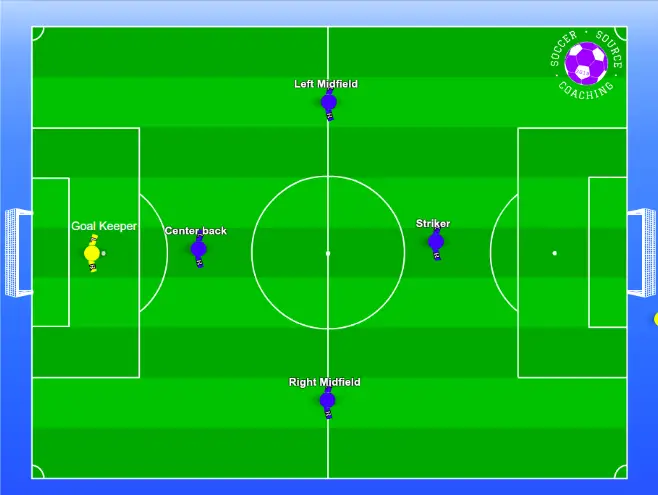
The 5v5 youth soccer formation is made up of 4 outfield players and one goalkeeper.
They are positioned in a diamond shape with 1 defender, 2 midfielders and 1 forward
The outfield players include:
- 1 center-back
- A left midfielder
- A right midfielder
- 1 striker
7v7 youth soccer position diagram
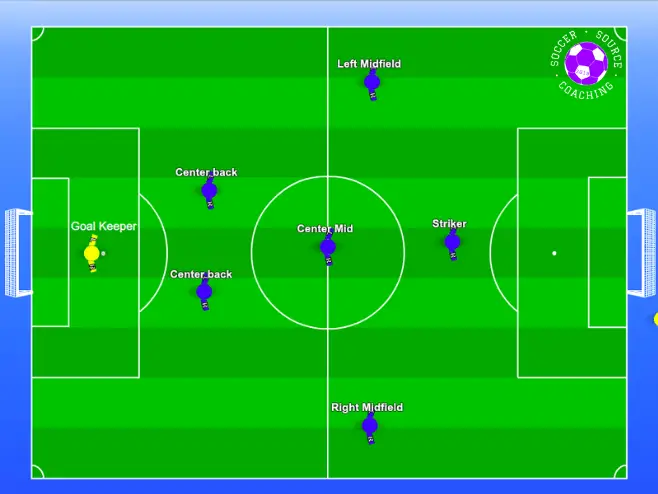
The 7v7 youth soccer formation is made up of 6 outfield players and one goalkeeper.
They are positioned in a 2-3-1 formation with 2 defenders, 3 midfielders, and 1 forward
The outfield players include:
- 2 center-backs
- A center midfielder
- 1 left midfielder
- 1 right midfielder
- 1 striker
Click here for the best 7v7 soccer formation to use
9v9 youth soccer position diagram
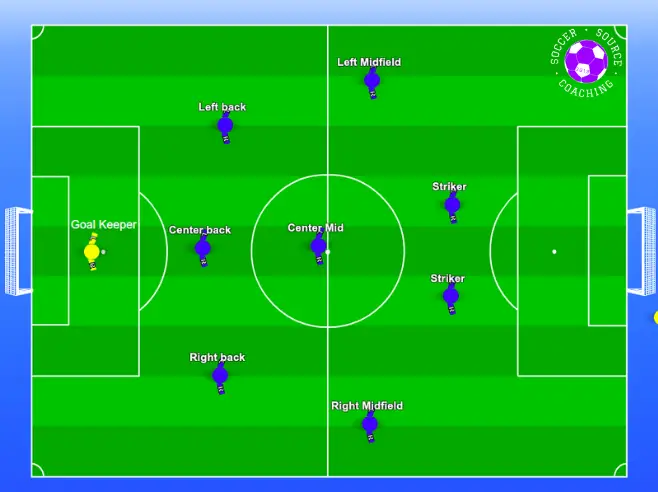
The 9v9 youth soccer formation is made up of 8 outfield players and one goalkeeper.
They are positioned in a 3-3-2 formation with 3 defenders, 3 midfielders, and 2 forwards
The outfield players include:
- A center-back
- 1 left back
- 1 right back
- A left midfielder
- A right midfielder
- 1 center midfielder
- 2 strikers
11v11 youth soccer position diagram
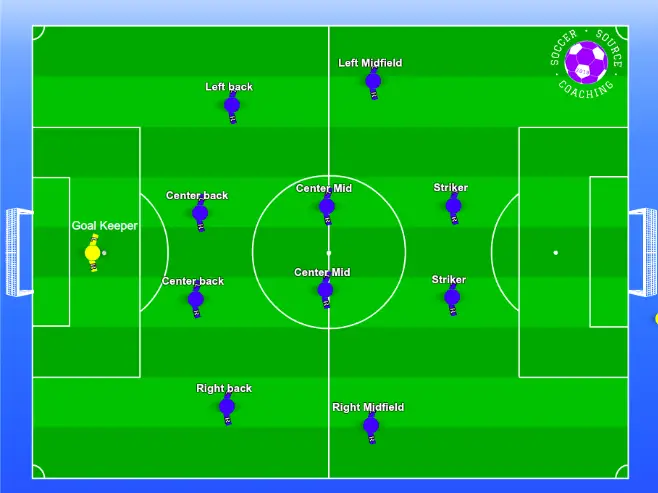
The 11v11 youth soccer formation is made up of 10 outfield players and one goalkeeper.
They are positioned in a 4-4-2 soccer formation with 4 defenders, 4 midfielders, and 2 forwards
The outfield players include:
- 2 center-backs
- Left and right back
- Left and right midfielder
- 2 center-backs
- 1 striker
Another popular 11v11 formation is the 4-3-3 soccer formation.
Last thoughts | youth soccer positions
When teaching players how to hold their positions patience is the key, no player will develop a full understanding of their position overnight that m.
It is a process that may take years to develop, and even then there will always be room for improvement!
To help your player put their best foot forward ensure that they have a variety of opportunities to play in different positions, this will help players deepen their understanding of not just their position but also others around them.
Please leave a comment if you have any questions that you cannot find the answers to!
If you are new to soccer coaching, this post on how to structure a training session in soccer would be perfect for you!
Putting together a new youth soccer team can be hard, these are the 10 best soccer tryout drills to use
Also if you found this post helpful or know a coach that would please share it with them using our social media buttons.
Thank you,
Toby
My Soccer Coaching Equipment
If you opened my coaching bag this is the soccer equipment you’d find!
